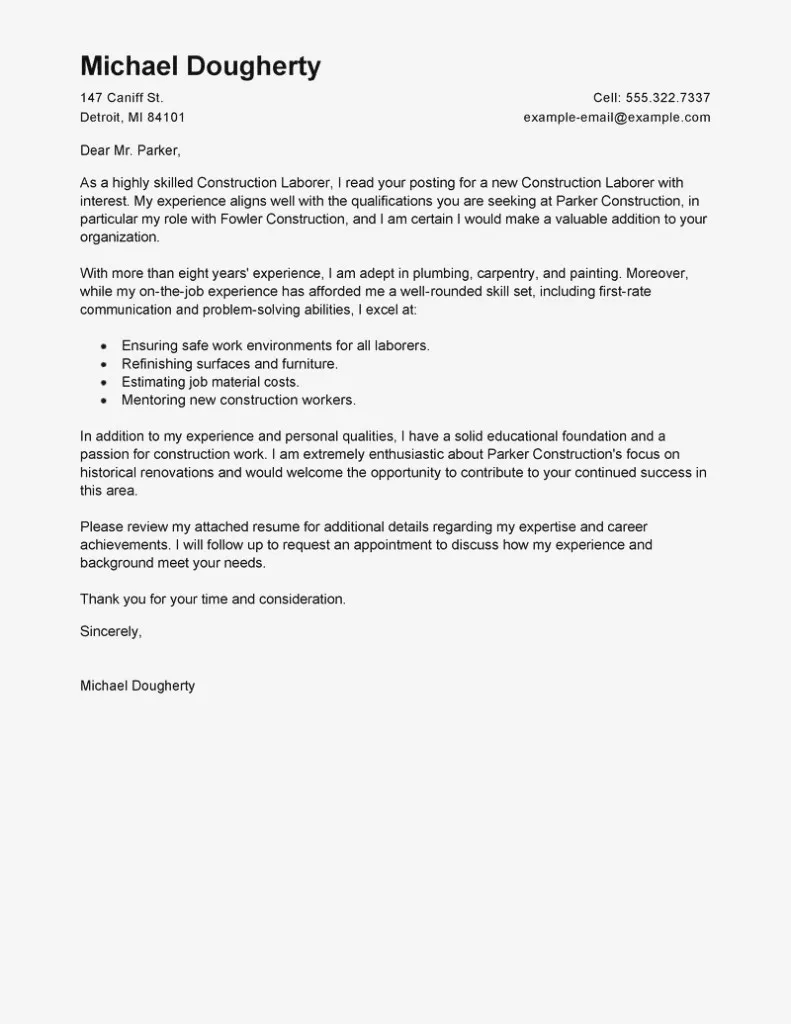Understanding the Purpose of a General Labourer Cover Letter
A cover letter for a general labourer position is your first opportunity to make a positive impression on a potential employer. It’s more than just a formality; it’s your chance to introduce yourself, highlight your relevant skills and experience, and express your enthusiasm for the role. Unlike a resume, which provides a factual overview of your background, a cover letter allows you to connect with the hiring manager on a more personal level. It lets you explain why you’re the perfect fit for the job and why you’re genuinely interested in the company. A well-crafted cover letter can significantly increase your chances of securing an interview and ultimately landing the job. Think of it as a sales pitch, where you’re selling yourself and your abilities to the employer. It is a critical piece in your job hunting arsenal and should be customized for each application.
Key Components of a Strong Cover Letter
To create a compelling cover letter, you need to include certain key components. These elements, when combined effectively, will showcase your qualifications and make you stand out from other applicants. Each section of the cover letter plays a vital role in conveying your message clearly and persuasively. They must be presented in a clear and easy-to-read format that instantly grabs the attention of the hiring manager. Neglecting any of these key components will likely lead to your application being passed over for those that do.
Contact Information & Date
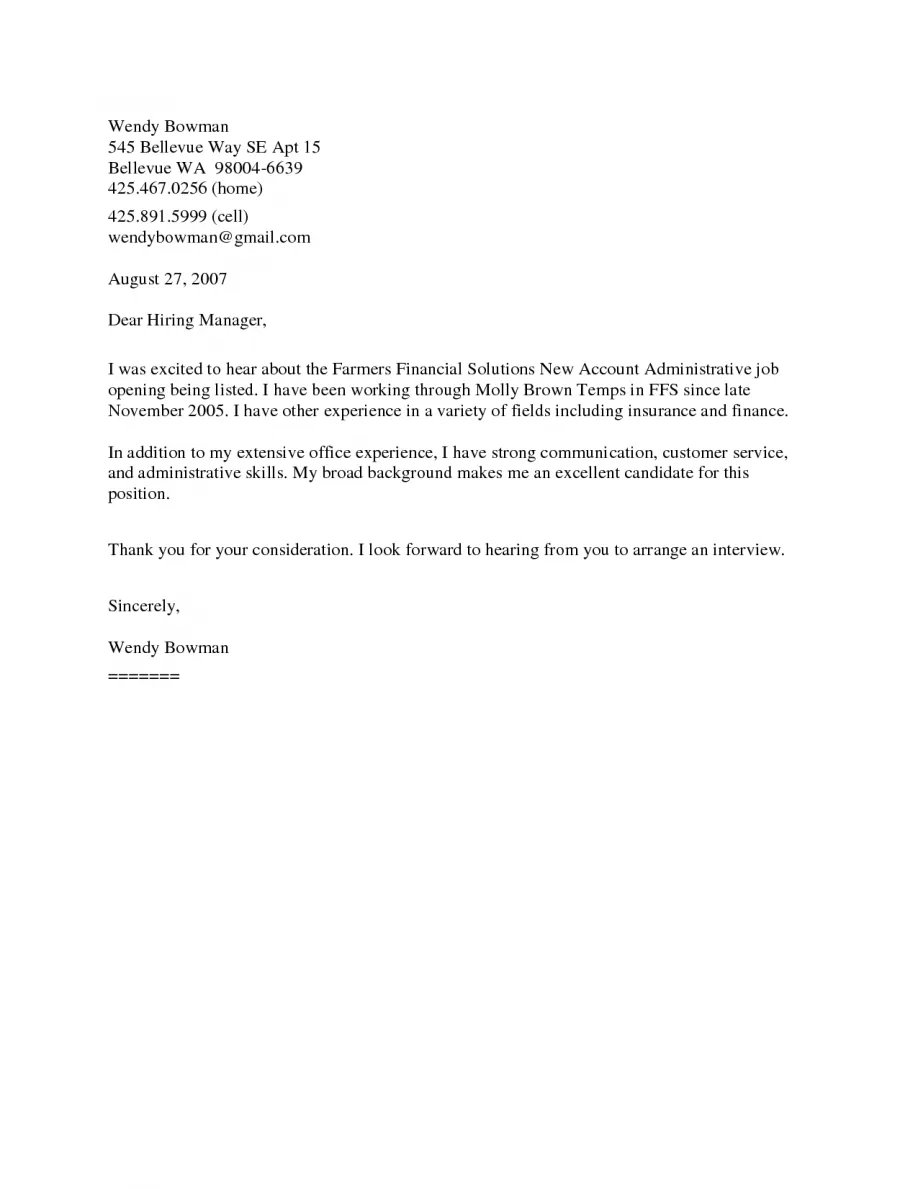
At the very top of your cover letter, start with your contact information. This should include your full name, address, phone number, and email address. Ensure that your email address is professional. Below your contact information, add the date. Following the date, include the hiring manager’s name, their title, and the company’s name and address. If you do not have this information, you can research it on the company website, or you can simply address it to ‘Hiring Manager’.
Personalized Greeting
Avoid generic greetings like ‘To Whom It May Concern.’ Instead, try to find the name of the hiring manager or the person responsible for reviewing applications. A personalized greeting shows that you’ve taken the time to research the company and are genuinely interested in the position. If you cannot find a specific name, a greeting like ‘Dear Hiring Team’ or ‘Dear [Department Name] Hiring Manager’ is a better alternative. Taking this simple step can set your cover letter apart from the many others that a hiring manager may read in a given day.
Opening Paragraph
The opening paragraph is your first chance to capture the reader’s attention. State the position you’re applying for and where you found the job posting. Briefly mention why you’re interested in the role and the company. Make it clear that you’re a good fit by referencing a key skill or experience that aligns with the job description. Keep it concise and engaging to encourage the hiring manager to read the rest of your letter. Start with an enthusiastic tone that highlights what you bring to the table.
Highlighting Relevant Skills and Experience
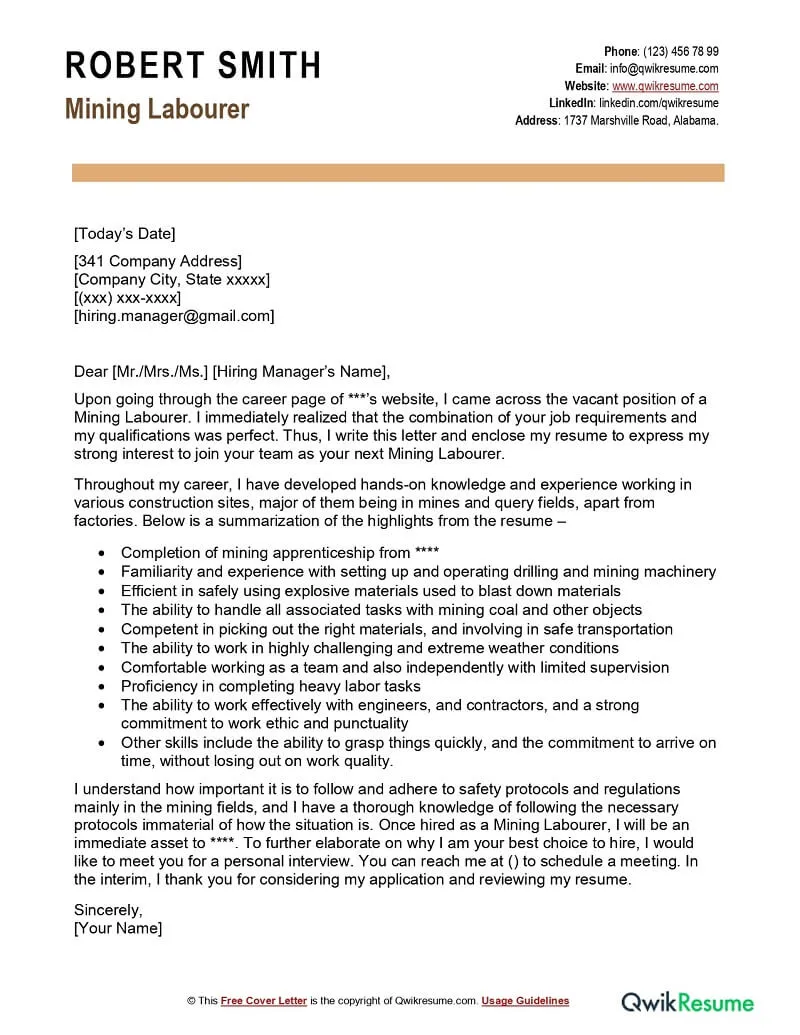
The body of your cover letter is where you showcase your qualifications. Focus on the skills and experience most relevant to the general labourer position. Use specific examples to demonstrate your abilities and achievements. Avoid simply listing your skills; instead, provide context and explain how you’ve used those skills in the past. Quantify your achievements whenever possible, using numbers or data to showcase your impact. Tailor this section to the specific requirements of the job description, highlighting the key skills and experiences the employer is seeking.
Physical Stamina and Strength
General labourer roles often require significant physical stamina and strength. Emphasize your ability to perform physically demanding tasks, such as lifting heavy objects, working for extended periods, and working in various weather conditions. If you have experience in physically demanding jobs, highlight them, specifying the types of tasks you performed and the environments you worked in. If you have any certifications related to physical fitness or safety, such as First Aid or CPR, be sure to mention them. Give the hiring manager confidence in your ability to handle the physical demands of the job.
Teamwork and Communication Skills
General labourers often work in teams, so strong teamwork and communication skills are crucial. Provide examples of how you’ve worked effectively with others, whether on construction sites, in warehouses, or in other team-oriented environments. Mention any experience you have in following instructions, coordinating tasks, and communicating effectively with supervisors and colleagues. Highlight your ability to listen, follow directions, and contribute positively to a team environment. Good communication ensures that everyone is on the same page, reducing errors and enhancing productivity.
Specific Work Experience
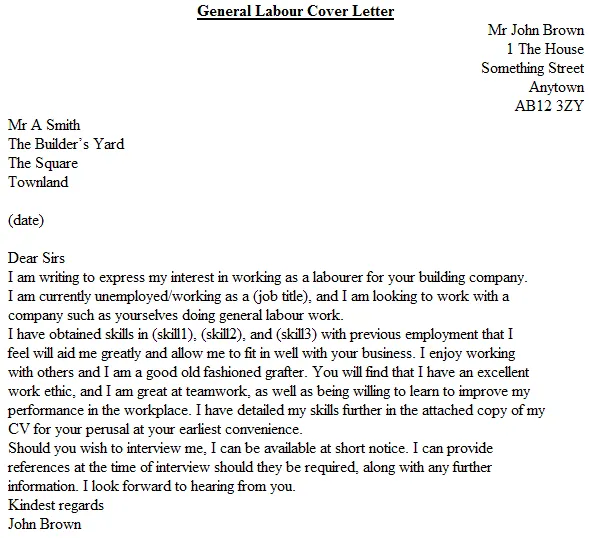
Detail your specific work experience in a clear and concise manner. Focus on the tasks and responsibilities that align with the general labourer position. For instance, if the job description mentions a need for experience with specific tools or equipment, be sure to highlight your familiarity with those items. Include details about the projects you’ve worked on, the types of sites you’ve been on, and the role you played. Be specific and relevant, ensuring that your experience directly relates to the job requirements. This helps the employer quickly assess your qualifications.
Quantifying Achievements
Whenever possible, quantify your achievements. Use numbers, percentages, or other data to illustrate your contributions in previous roles. For example, you can say, ‘Successfully completed [number] projects,’ or ‘Increased efficiency by [percentage]’. Quantifying your accomplishments adds credibility to your cover letter and demonstrates the value you can bring to the company. This provides tangible evidence of your abilities and makes your application more compelling.
Demonstrating Enthusiasm and Suitability
Besides highlighting your skills and experience, it is essential to express your enthusiasm and suitability for the role. Let the employer know why you’re excited about the opportunity and how your values align with the company’s mission. This shows that you’re not just looking for any job but are genuinely interested in the specific company and position. It is a major indicator to the employer that you will likely stay with the company.
Researching the Company
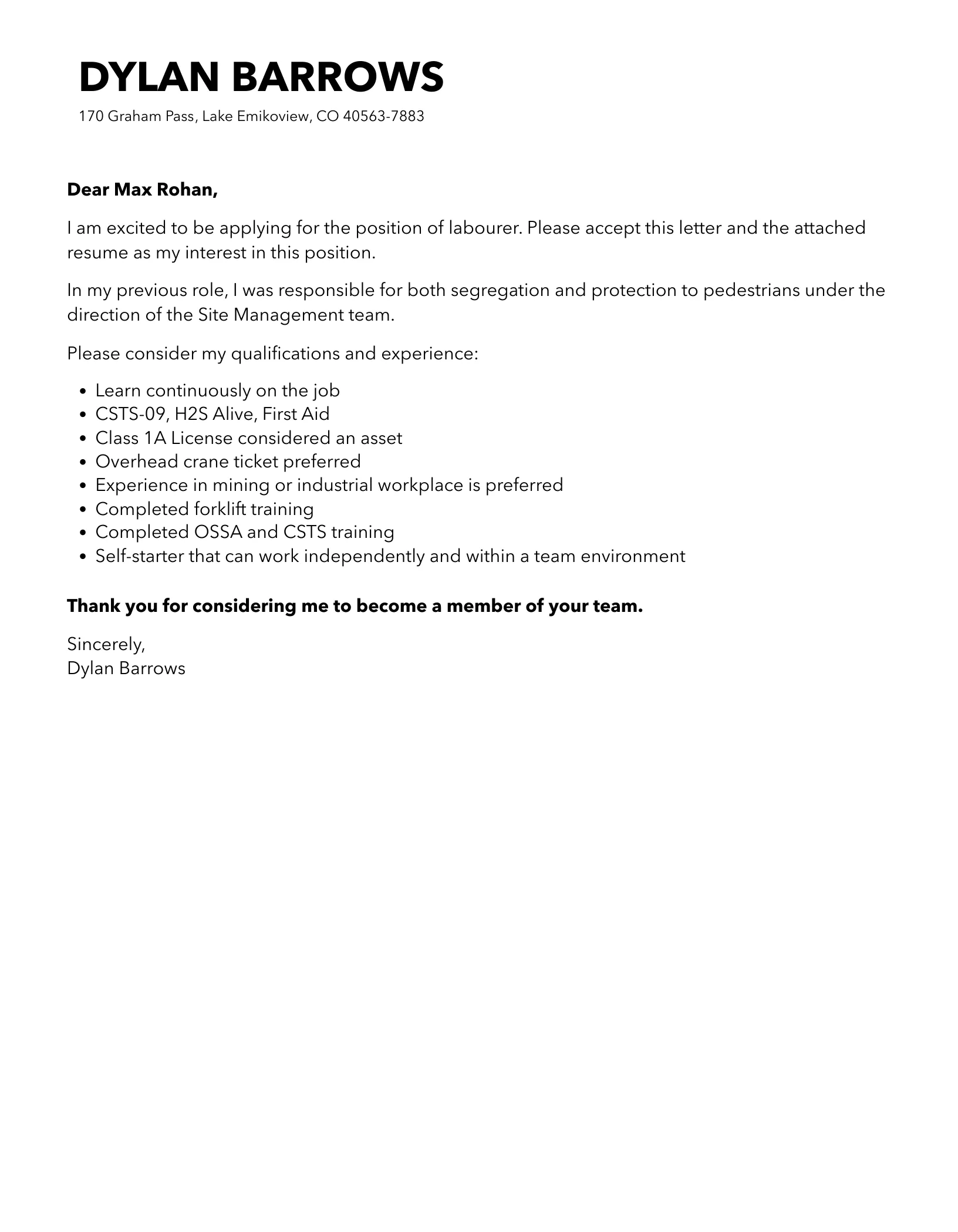
Before writing your cover letter, research the company. Understand its mission, values, and recent projects. This demonstrates your interest and allows you to tailor your letter to the company’s specific needs and goals. Mentioning something specific about the company, such as a project they’re working on or their commitment to a particular cause, shows that you’ve done your homework and that you’re serious about joining their team. Understanding their core values can help you align your personal values.
Tailoring to the Job Description
Carefully review the job description and tailor your cover letter to match the specific requirements and keywords. Highlight the skills and experiences that the employer emphasizes in the job posting. Use similar language and terminology to show that you understand what the company is looking for. This makes it easier for the hiring manager to see how your qualifications align with the role. This targeted approach significantly increases the chances of your application being noticed.
Expressing Interest and Availability
In the closing paragraph of your cover letter, reiterate your interest in the position and the company. State your availability for an interview and how you can be reached. Express your enthusiasm for the opportunity to contribute to the team. Make it easy for the employer to contact you by providing your phone number and email address again. End with a strong closing statement that reinforces your suitability for the role.
Proofreading and Formatting
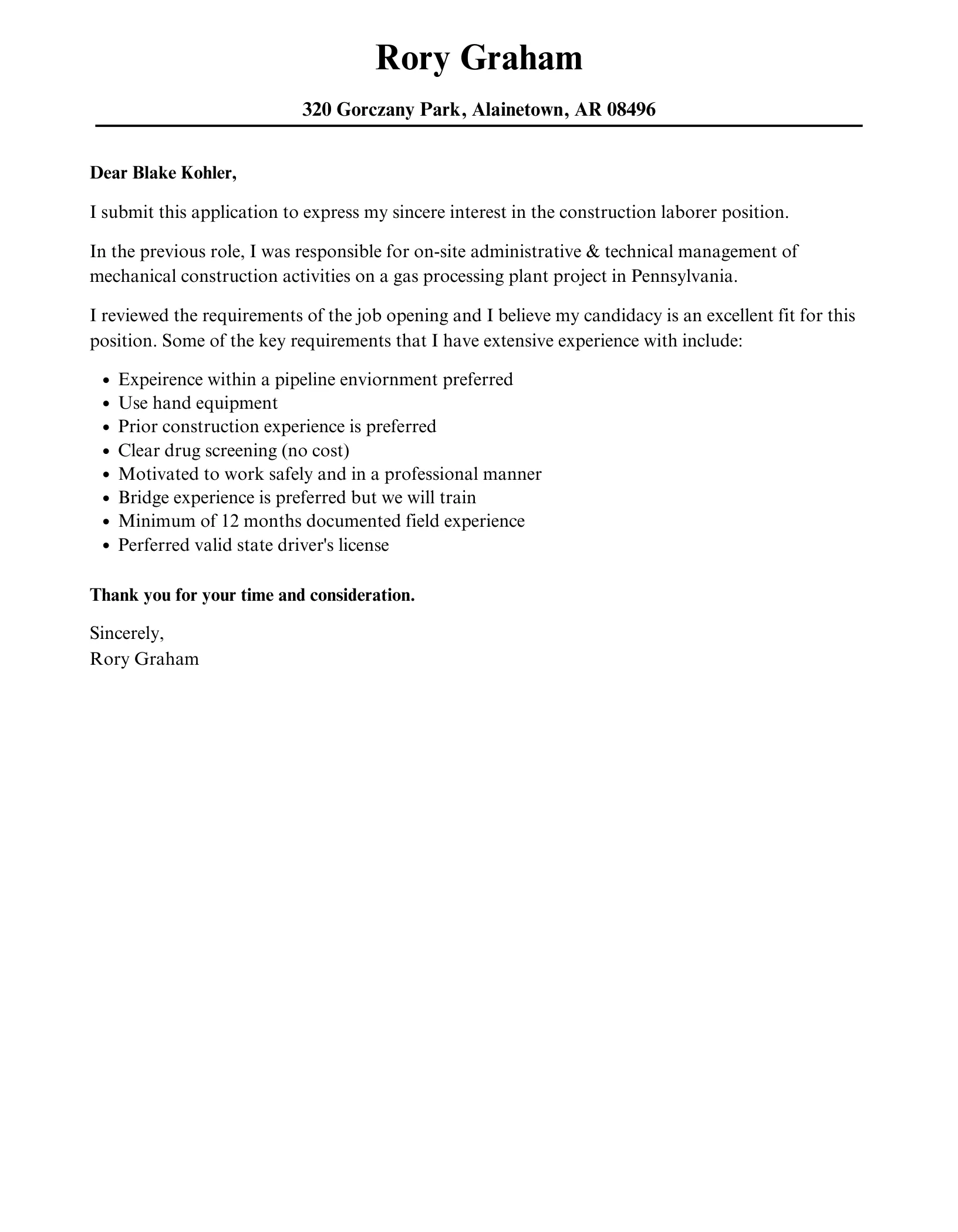
Ensure your cover letter is well-formatted and free of errors. Proofreading is a critical step in the writing process. A polished and professional cover letter reflects your attention to detail and your commitment to quality. It shows the employer that you care about presenting yourself well. Take your time and double-check everything before submitting your application. Have a friend or family member proofread it for you as well, as a fresh pair of eyes can often catch mistakes that you might miss.
Using Professional Language
Use professional language throughout your cover letter. Avoid slang, jargon, or overly casual language. Be concise and clear in your writing, making sure that your message is easy to understand. Use strong action verbs to describe your accomplishments and responsibilities. Maintain a professional tone from beginning to end, even when expressing enthusiasm. This reflects your maturity and professionalism.
Ensuring Correct Grammar and Spelling
Check your cover letter for grammar and spelling errors. These errors can undermine your credibility and make a negative impression on the hiring manager. Use a spell checker and grammar checker, but also carefully review the document yourself. Typos or grammatical errors can be seen as a lack of attention to detail, so make sure that your cover letter is impeccable. Proofreading your work thoroughly is essential.
Proper Formatting
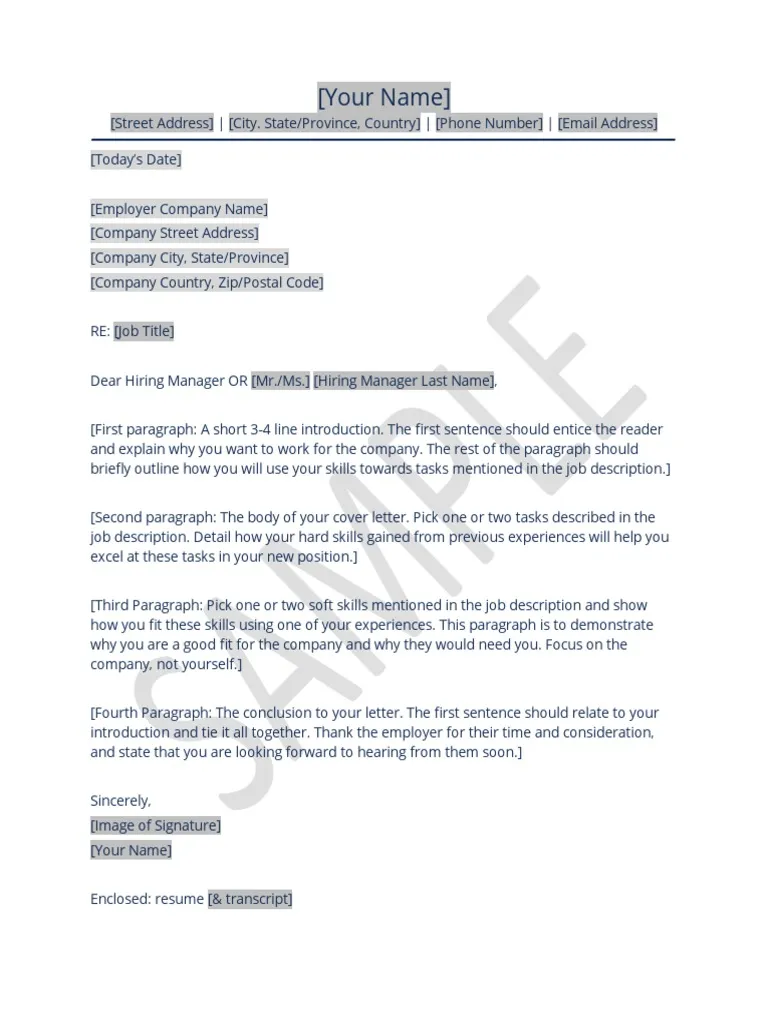
Proper formatting is crucial for readability. Use a standard font, such as Times New Roman or Arial, with a size between 10 and 12 points. Ensure that your paragraphs are well-spaced, and use clear headings and subheadings to organize your content. Keep the layout clean and uncluttered. Avoid excessive use of bolding or underlining. A well-formatted cover letter is easy to read and leaves a positive impression.
Finalizing the Cover Letter
Once you have written your cover letter, there are a few final steps to take to ensure that it is as effective as possible. Make sure that you complete these steps to make your letter really shine. Finishing strong with these final steps will help you secure that interview.
Call to Action
Include a call to action at the end of your cover letter. Tell the hiring manager what you want them to do, such as to contact you to schedule an interview. Make it easy for them to take the next step. This helps to move the application process forward and shows that you’re proactive. Provide your contact information again, making it simple for them to reach you.
Closing and Signature
End your cover letter with a professional closing, such as ‘Sincerely,’ or ‘Best regards.’ Sign your name above your typed name. This personal touch adds a professional finish to your cover letter. A well-crafted and finalized cover letter is more likely to lead to an interview. Remember that this is one of the most important steps in your job search.
